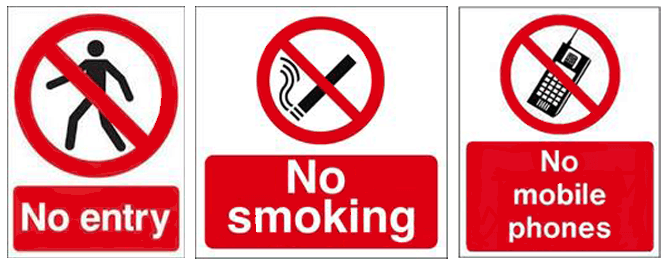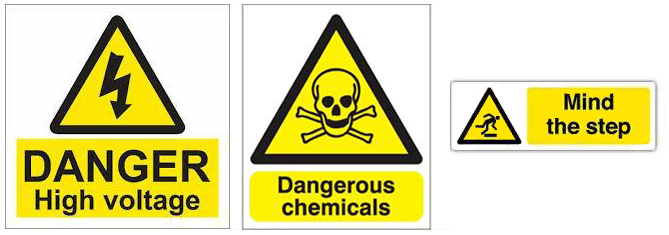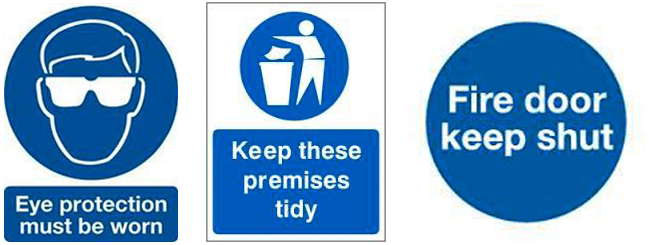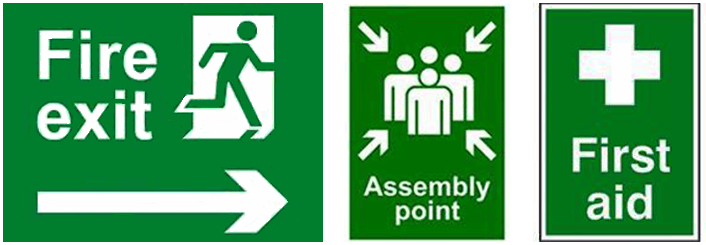In accordance with The Health and Safety (Safety Signs and Signals) Regulations 1996, Health and Safety Signs provide information and instructions to the viewer. In the UK it is regulation for businesses to display and maintain safety signs in the workplace where there is a potential risk that has not be removed or controlled by other methods.
Many of the safety signs we see in the UK have been standardised, so where ever you may see them there is an understanding of its meaning. The standardisation of health and safety signage has allowed signs to deliver information in a silent manner, almost a universal language that most UK residents can obtain information from quickly due to the sign’s shape and colour.
There are four colours associated with health and safety signage: red, yellow, blue and green. From this, the reader can easily interpret the importance of the sign from the colour displayed which in turn influences their reaction.
Health and Safety Signs & Their Meanings
Red Signs
When the colour red is used in a safety sign it is usually a prohibitory sign which aims to draw the viewers’ attention to a dangerous situation nearby or one that may arise through their actions. Prohibitory signs are usually round in shape and feature a thick red edge with a diagonal line through a black and white picture, depicting the prohibited behaviour.

Yellow or Amber Signs
As with traffic lights, a yellow or amber safety sign depicts a warning, which alerts the viewer to take precaution or care in their environment. Commonly seen when using hazardous chemicals, a warning sign is triangular in shape. Over 50% of the sign must be yellow or amber with a thick black edge and a clear pictogram of the hazard, often referred to as hazard signs.
In the work place, it is the employer’s responsibility to ensure all staff understands the meaning of all safety signage displayed within their facilities even if it the sign’s message appears to be self-explanatory.

Blue Signs
Blue safety signs are known as mandatory signs, which demonstrate that a specific behaviour must be undertaken before proceeding, this might be applying safety glasses when working with chemicals or wearing a hard helmet when entering a construction site.
Mandatory safety signs are circular in shape and are made up of over 50% blue background with a white pictogram displaying the instruction.

Green Signs
Green safety signs provide information to the reader which highlight safety, showing exit routes, first aid areas or stations. These signs are rectangular in shape with white imagery, clearly showing the direction the person needs to move in or the safety facilities provided at a location.

Textual prompts can be used in conjunction with the images displayed on any of these signs to ensure the correct message is delivered to the viewer.
Whatever the purpose of the safety signage, UK employers have a responsibility to ensure that the most relevant health and safety sign is displayed, unobstructed and well maintained. They have a duty to all staff, to ensure that they understand the meaning of all signage displayed within their facilities.
If you need help ensuring your facilities’ health and safety signs are compliant with regulations, contact your local FASTSIGNS for information on the best solution for your workplace. For more information on the Health and Safety (Safety Signs and Signals) Regulations 1996, visit the Health and Safety government website: http://www.hse.gov.uk/index.htm.